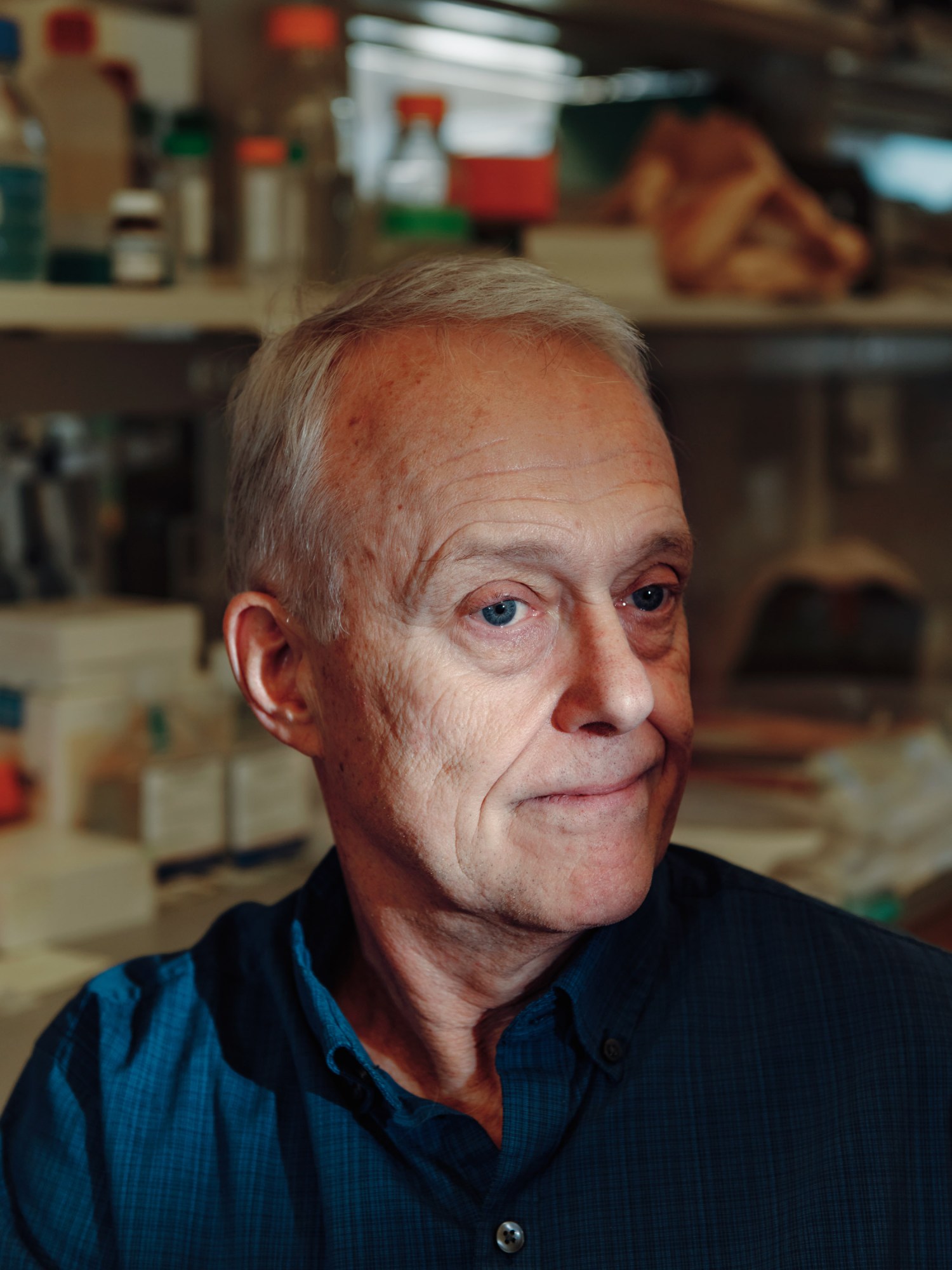“Sure, we managed to have the brain say ‘Go eat,’” he says. “But that’s not really an explanation. How does that actually work?”
To answer that question, Lowell has teamed up with Mark Andermann, a neuroscientist who studies how motivation shapes perception (and who also happens to occupy the office next to his at Boston’s Beth Israel Deaconess Medical Center). Together they are following known parts of the neural hunger circuits into uncharted parts of the brain, in some cases activating one neuron at a time to methodically trace new connections through areas so primitive that we share them with lizards.
Their work could have important implications for public health. More than 1.9 billion adults worldwide are overweight and more than 650 million are obese, a condition correlated with a wide range of chronic health conditions, including diabetes, fatty liver disease, heart disease, and some types of cancer. Understanding the circuits involved could shed new light on the factors that have caused those numbers to skyrocket in recent years.

TONY LUONG
And it could also help solve the mystery behind a new class of weight-loss drugs known as GLP-1 agonists. Many in the field of public health are billing these drugs, which include Wegovy and Ozempic, as transformative, providing the first effective method of combating obesity, and allowing some individuals to lose more than 15% of their body weight. They’ve also become something of a cultural phenomenon; in the last three months of 2022, US health-care providers wrote more than 9 million prescriptions for the drugs. Yet no one can explain precisely how and why they work. Part of the reason is that scientists still haven’t decoded the complex neural machinery involved in the control of appetite.
“The drugs are producing the good effects, the satiety effects, through some aspect of this larger system,” says Lowell, who has watched their emergence with surprise and genuine fascination. “One of the most important components in figuring out how they work is to define what the system is. And that is what we are doing.”
But the ultimate goal for Lowell and Andermann is far loftier than simply reverse-engineering the way hunger works. The scientists are searching for the elusive bundle of neurons that allow our instinctual urge to eat to commandeer higher-order brain structures involved in human motivation, decision-making, memory, conscious thought, and action. They believe identifying these neurons will make it possible to study how a simple basic impulse—in this case, a signal from the body that energy stores are beginning to run low and need to be replenished—propagates through the brain to dominate our conscious experience and turn into something far more complex: a series of complicated, often well-thought-out actions designed to get food.
This quest has so consumed Lowell in recent years that his graduate students have coined a term for the elusive bundle of brain cells he is seeking: “Holy Grail” neurons.
It might sound like a tired scientific trope. But for the understated Lowell, the term is perfectly apt: what he’s seeking gets at the very heart of human will. Finding it would be the culmination of decades of work, and something he never imagined would become possible in his lifetime.




